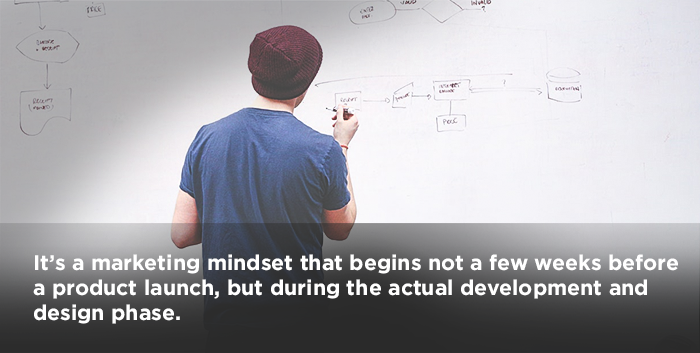OK, yes. I’m doing it again. There’s another new term out there that’s taking the marketing industry by storm — growth hacking. Have you heard about it? If you haven’t yet, you will because it’s revolutionizing marketing in the tech industry, and has helped make monumental international successes out of companies like Instagram, Uber, Pinterest, Airbnb and Dropbox (to name a few).
What is growth hacking?
Essentially, growth hacking at its core is a radically new way of looking at marketing. In fact, it puts aside the notion that marketing is a self-contained act that starts once a company’s product is fully developed. Growth hackers believe that products (and even business models) should be changed until they are made to generate explosive (even viral) reactions from the initial adopters who use them. In other words, it’s a marketing mindset that begins not a few weeks before a product launch, but during the actual development and design phase.
“A growth hacker doesn’t see marketing as something one does but rather as something one builds into the product itself,” writes Ryan Holiday author of the book Growth Hacker Marketing. “The product is then kick-started, shared and optimized (with these steps repeated multiple times) on its way to massive and rapid growth.” Thus, the ultimate goal of every growth hacker is to build a product that becomes a self-perpetuating marketing machine that reaches millions of users by itself.
Just as DIY home hacks are designed to make life easier in simple, low-cost ways, growth hackers relentlessly pursue growth by testing their products with users across marketing channels in an effort to find the most efficient and low-cost ways to grow a business. Basically, they are working backwards from the customer to the product to get the best product market fit (PMF). Eric Ries, author of The Lean Startup, explains that the best way to get to PMF is by starting with a “minimum viable product” and improving it based on feedback, as opposed to what most traditional marketers do, which is to try to launch publicly with what they think is a final, perfected product.
Why do I need growth hacking?
Nowadays, everyone wants their product to be the new, new thing. (That is probably why there are so many tech start-ups out there trying to develop the next revolutionary software tool). Again, if you think of growth hacking as a mindset instead of a toolkit, you need it because it will help you to create innovative strategies that you might not try out otherwise.
Of course, there is no magic recipe to make viral content or to get people to recommend your brand, and even growth hacking requires that you still pull your customers in. (But if you have built viral features into your product, the more users stick, the more it will spread). The big difference between growth hackers and traditional marketers is that they try to get the word out in a cheap, effective and usually unique way that no-one thought to try before. Since the growth hacking process begins with what was previously considered to be outside the marketer’s domain (product development), it doesn’t end with generating leads that are just passed off to someone else to deal with.
The growth hacker will always ask:
- Why should customers share it?
- Have you made it easy for them to spread the word?
- Is the product even worth talking about?
A growth hacker mindset is that “retention trumps acquisition,” but even the best growth hacker cannot “grow a broken product.”
How can I become a growth hacker?
If you want to become a growth hacker, you need to think like one. That means contributing to the product development process. Identifying your customers and creating a product that will not only fit their needs but “blow their minds” is a marketing decision, not just a design and development choice; this is often overlooked by engineers who are solely focused on the product features itself (and not the people that are going to use them).
The best marketing decision is to have a product that fills a real and compelling need for a highly defined group of people no matter how much tweaking that takes to achieve.
As marketers, if we want to focus on growth hacking, we need to stop thinking that our goal is to “build a brand”. We’re better off putting all of our effort into building a horde of completely loyal and fervent users. When clients say, “We want you to help us go viral,” we need to help them understand that people will share what is worth sharing (and, of course, what is conducive to spreading because the tools to do so are directly embedded into the product itself). Not only does the product need to be inherently worth sharing, but also it must facilitate and encourage the spreading by adding incentives that encourage the user to do so. Being creative to think of highly out-of-the-box ways to get people to share is at the heart of any growth hacker strategy. There’s no one recipe for success and it will be different for every company.
From my perspective, I think there’s one fundamental thing that most marketers forget (and the cocky ones won’t ever admit): Failure helps us grow and learn how we can do things better. Growth hackers not only understand this, but they make it the center-piece of their work. They test, they learn, they adapt, and they test again. There’s nothing wrong with this — on the contrary, it’s actually considered to be a good thing and how they’ve helped develop some of the most innovative and highly used products and services on the planet today. Despite what any marketer will tell you, marketing is not an exact science. Yes, it is somewhat scientific because it involves a lot of behavioral psychology (or behavioral economy in most cases), but it’s nearly impossible to be a true expert in a field that is constantly changing (and this is even more pronounced in the tech industry which is inherently metamorphosing the world in which we are living from one decade to the next).
So if you want to be a growth hacker, you need to be adaptable, flexible, willing to try new things, to fail and to try again. Apply. Rinse. Repeat.
Sources:
Growth Hacker Marketing: A Primer on the Future of PR, Marketing, and Advertising by Ryan Holiday
The Lean Startup by Eric Ries
Hacking Growth: How Today’s Fastest-Growing Companies Drive Breakout Success by Sean Ellis
The New New Thing: A Silicon Valley Story by Michael Lewis
https://www.quicksprout.com/the-definitive-guide-to-growth-hacking-chapter-1/
https://www.livechatinc.com/blog/what-is-growth-hacking/
https://en.wikipedia.org/wiki/Growth_hacking










